Experiments
Experiment #1
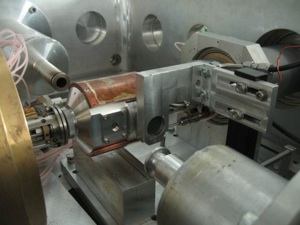
Nuclear reactions are produced using high energy primary beams (eg. protons) incident upon target material. In this picture, an experiment is being prepared requiring fission of natural uranium. The exotic nuclear reaction products (fission fragments) which are radioactive and therefore short lived, are captured before being accelerated away in the form of a beam of singly charged ions.
Experiment #2
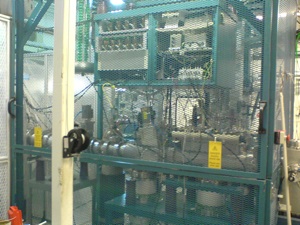
After mass selection, the ions slowed on entry into an ion beam cooler-buncher - a gas-filled linear RFQ. The emittance and longitudinal energy spread is reduced as the ions drift to the end of the device (before re-acceleration). More importantly, the ions can be accumulated and released in bunches. With fluorescence detection, this allows the photon background (dominated by continuous laser scatter) to be suppressed by 4 orders of magnitude (the ratio of the temporal length of the bunch to the time between bunches) by only accepting photons which coincide with the transit of an ion bunch through the detection region.
Experiment #3
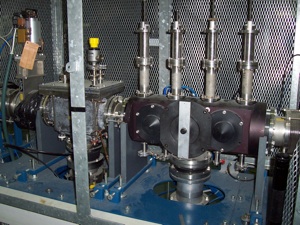
In the collinear geometry, the laser beam and fast ion beam interact in a parallel or anti-parallel manner. The fixed energy spread, determined by the ion source or cooler, leads to a forward velocity spread which broadens the optical resonances through the effect of Doppler broadening. Accelerating the ions to high velocities (typically 30 keV) however, reduces the forward velocity spread and increases the spectral resolution, while maintaining efficient spatial overlap.
Experiment #4

Recently, the focal point of slowly travelling ions at the exit of the cooler has been exploited to optically pump ground state transitions. This allows metastable atomic states to be populated, already being used to extend the reach of collinear laser spectroscopy.
Experiment #5
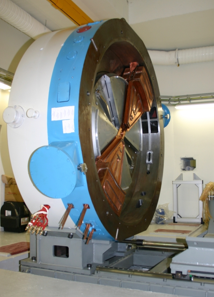
A new laboratory has recently been constructed at JYFL, Finland, adjacent to the existing experimental set up. This will have its own dedicated 100 microAmp, 30 MeV cyclotron, giving unprecedented beam time to IGISOL experiments - used by the laser spectroscopy and Penning trap mass measurement groups. Work will commence to construct new experimental stations in the new laboratory in the summer of 2010.
Experiment #6
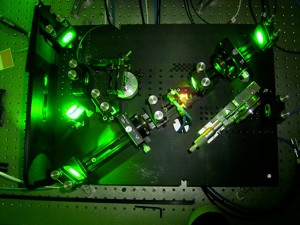
In addition to spectroscopy, resonant ionisation techniques are used to provide pure beams of a single isotope. A variety of different elements as well as masses are produced in the fission or fusion process. While magnets can be used to provide mass selection, lasers exploit the difference in “optical fingerprint” between elements to ensure that the beam is of single nuclide (selected by mass and proton number). This assists other experiments where contaminant beams would either mask the required signal or cause misidentification – attributing an effect to a contaminant nuclide of a different element but of the same mass.
Experiment #7
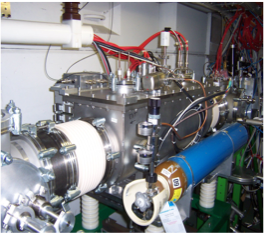
Recently the group has been constructing a new laser spectroscopy station to use at ISOLDE, CERN. A collinear resonance ionization technique will be employed whereby a series of lasers are used to selectively re-ionize a neutralized beam with a multi-step excitation scheme. An optical resonance spectrum can then be efficiently produced by monitoring the ion flux as the laser frequency is scanned with the advantage that the spectrum is essentially background free. This combines the efficiency of resonance ionization spectroscopy with the resolution of the collinear beams method. A bunched beam from the newly installed cooler, ISCOOL, is essential to eliminate duty cycle losses of the high power pulsed lasers.
